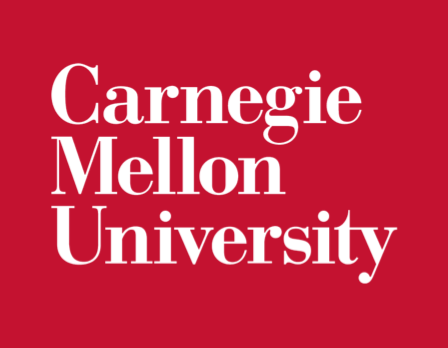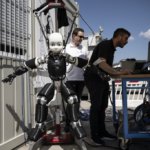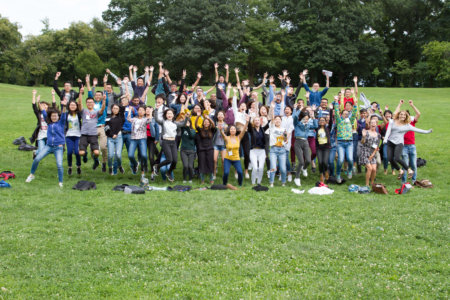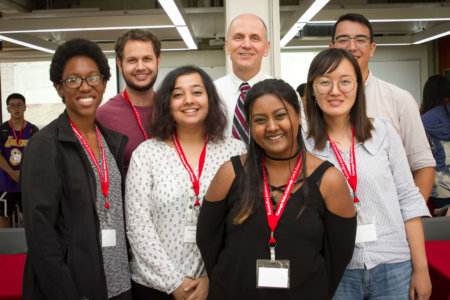Located in Pittsburgh, Pennsylvania — one of the US’s top cities for millennials and an increasingly popular cultural and technology hub — Carnegie Mellon University (CMU) has over 115 years of providing innovative education, research, creativity and entrepreneurship.
Today, its Civil and Environmental Engineering department (CEE) is home to dynamic programmes in Data Analytics and Artificial Intelligence (AI).
CEE is part of the College of Engineering. Students here pursue some of the most exciting interdisciplinary courses with strong research support and international impact, particularly those that touch upon Data Analytics and AI.
Professor Mario Bergés believes these courses are crucial in this digital age. “As the technologies available to us broaden, and the societal goals change, it is only logical that our profession adapts its practices,” he explains. “We are currently under a significant industrial revolution powered by autonomous technologies, in particular, and information/communication technologies more broadly.”
Assistant Professor Katherine Flanigan agrees. “The civil and environmental engineering landscape is rapidly evolving in unprecedented directions due to recent technological advancements in computational capabilities for simulation, sensing and actuation for intelligence, as well as in data science for data-driven analytics,” she adds.
This sentiment is echoed by Associate Professor Pingbo Tang, who says “the next generations of civil engineers, construction project managers, and infrastructure engineers must make decisions based on multiple sources of data and documents”.
Dynamic course offerings to prepare for a smart future
Here, students exploring Data Analytics and AI do so in true CMU fashion: with stellar support, an excellent network, and a world-renowned faculty.
In Bergés’s Data Acquisition and Instrumentation for Infrastructure Systems classes, students are “trained to design, deploy and operate ‘smart’ infrastructure systems which can sense, plan and act on their own.”

Professor Bergés listening to a student’s poster session. Source: Carnegie Mellon University
CMU’s “Advanced Infrastructure Systems” programme is interdisciplinary, incorporating Computer Science and Engineering; Public Policy; and Civil and Environmental Engineering. As a result, students trained to “develop and manage new information and communication technologies to solve civil and environmental engineering problems”.
As for Tang, he teaches two interdisciplinary courses: Building Information Modelling (BIM) for Engineering, Construction, and Facility Management and Spatiotemporal Computing for Resilient Civil Infrastructure Operation and Maintenance. The latter is a new course being offered for Spring 2023.
“They will equip students with profound civil engineering problem definitions with diverse domain applications, from airport operations to preventive bridge and infrastructure maintenance,” Tang says. “Through an interdisciplinary structure of this course, the students will learn how civil engineers are leading the integration of fundamental science, computing and technical solutions, and sociotechnical systems that have broad socioeconomic impacts.”
Tang’s favourite feature of these courses is that they are hands-on. Students will devise solutions for a domain practical issue and then compare and decide which data exchange standard (used in civil and construction engineering domain) is better. After participating in role-play case studies, they wrap up with a summary of their learning experience and future project roadmap for enhanced communication and collaboration.
At the same time, Tang wants students to experience first-hand how intelligent construction and maintenance technologies can be designed and utilised to bring about more flexible living communities in the future. To do this, students will visit factories and construction sites where they can see how the indoor layout of the prefabricated modular houses will look like and can be easily changed according to the needs of occupants.
Not only will Tang’s students develop hard and soft skills, but they will also meet guest speakers, and have debating and presenting opportunities via course projects. They will have access to specialist equipment in the state-of-the-art AIS laboratory too, such as IBM’s computing cloud, eye trackers, Virtual Reality and Augmented Reality systems (Microsoft HoloLens), and sensors that can measure human cognitive and physical conditions.

Source: Carnegie Mellon University
Finally, Flanigan’s graduate-level programme Foundations of Intelligent Infrastructure Systems teaches students — even those with zero experience — to “approach problems that are deeply rooted in CEE applications using advanced math and ECE (Electrical and Computer Engineering) tools, such as differential and difference equations, Laplace-domain and Z-domain system models, transformation methods between the time and frequency domains, feedback control of dynamic systems, sensing, data acquisition, and state space system models.”
Flanigan likes to use the Segway — an urban environment mobility tool that most students know about — to introduce students to control systems. They learn to “combine fundamental CEE concepts with control system theory to model and control a Segway” on top of real-world case studies that include Flanigan’s research projects.
From Flanigan’s breakdown of the class topics at the end of semester — should students be particularly interested in an industry pathway — she will point out the connection, and suggest future classes for more career marketability.
Ultimately, regardless of which course they pick from CMU’s CEE department, all students wanting to be future engineering leaders can be assured of receiving current and industry-relevant skills that can also easily be applied to the real world.
Follow the Civil and Environmental Engineering department on Facebook, Twitter, LinkedIn, and Youtube













